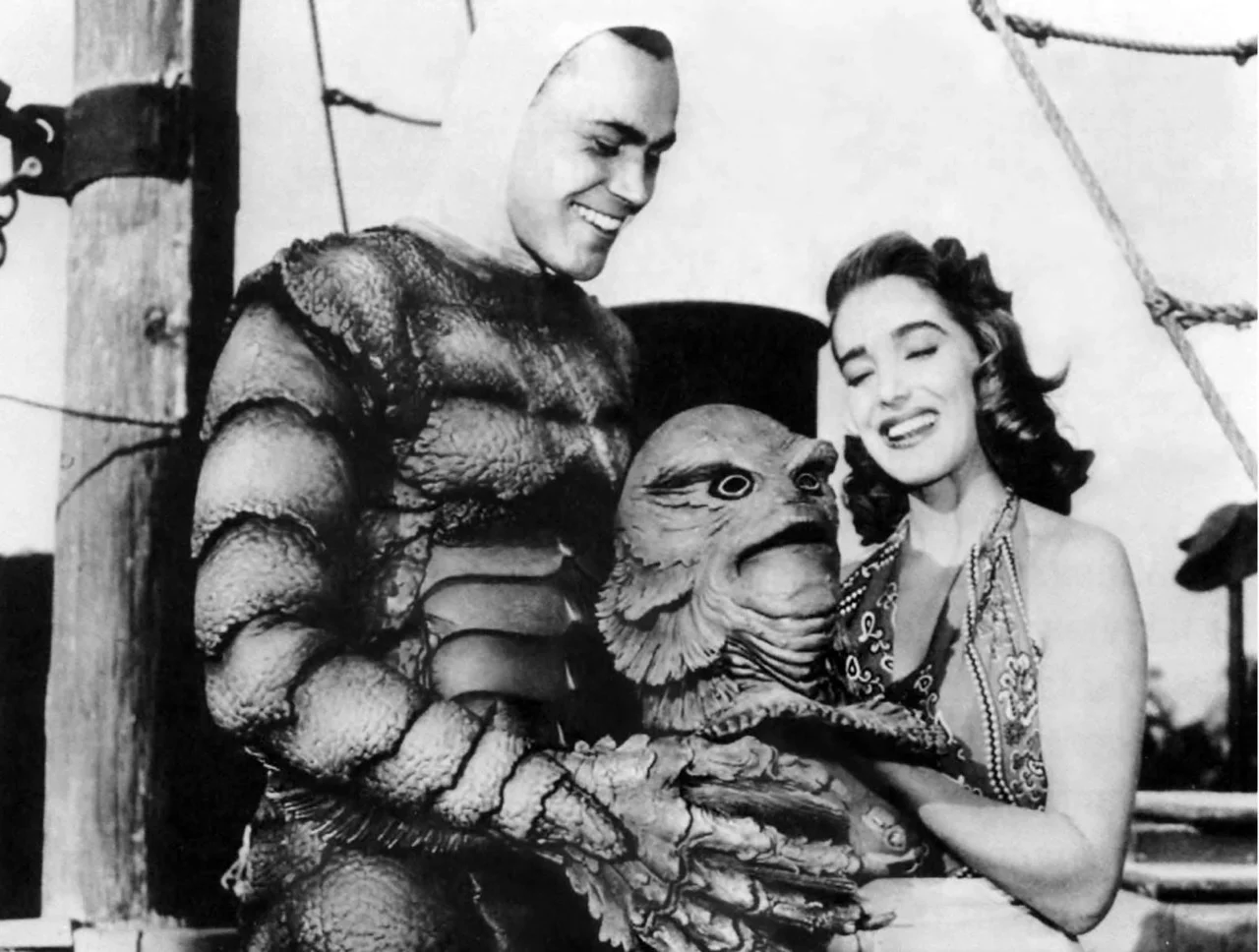The Ripple Effect: Legacy and Influence
The splash Creature from the Black Lagoon made in 1954 has rippled through the decades, influencing a vast sea of filmmakers, special effects artists, and audiences worldwide. Its legacy is not just confined to the murky waters of the Amazon but extends into the very fabric of horror and creature feature cinema. The Gill-man, with its humanoid appearance tinged with aquatic terror, became a symbol of the universal fear of the unknown, cementing its place alongside Dracula, Frankenstein, and the Wolf Man in Universal’s pantheon of classic monsters.
The sequels, Revenge of the Creature (1955) and The Creature Walks Among Us (1956), while not as critically acclaimed as the original, further explored the tragic existence of the Gill-man and its interactions with humanity. These films expanded the lore of the creature, adding layers to its character and evoking a sense of empathy amidst the terror. The franchise’s endurance highlights the timeless appeal of the Gill-man and its adaptability to various narratives, from horror to science fiction.
Modern homages, like Guillermo del Toro’s The Shape of Water (2017), pay tribute to the legacy of Creature from the Black Lagoon, reimagining the relationship between human and creature in a contemporary context. del Toro’s film, which garnered critical acclaim and multiple awards (including Best Picture and Best Director at the 90th Academy Awards), underscores the lasting influence of the Gill-man, proving that stories of misunderstood monsters continue to resonate with audiences. The enduring fascination with these creatures speaks to our collective curiosity about the unknown and the otherworldly, and especially, what lurks in the murky depths below.

Unearthing the Lagoon: Diving Deeper
As we plunge even deeper into the hidden depths behind Creature from the Black Lagoon, we uncover fascinating insights that further illuminate the ingenuity and dedication that went into creating one of cinema’s most enduring monsters. This journey brings to light the intricacies of the Gill-man’s creation, the challenges faced by the actors, and the inventive solutions employed by the production team to bring the creature to life both on land and underwater.
One of the most captivating aspects of the film’s production was the initial conception of the Gill-man. Producer William Alland’s vision was for the creature to possess a “more human” appearance, blending elements of sadness and beauty to craft a monster that was as alluring as it was terrifying. This ambition led to the creation of what was affectionately known as “The Pollywog,” a prototype suit that, while capturing the essence of Alland’s vision, failed to resonate with test audiences and studio heads due to its less menacing appearance.
The evolution from “The Pollywog” to the iconic Gill-man we know today was a testament to the collaborative creativity of the Universal makeup department, spearheaded by Bud Westmore. However, it was Milicent Patrick’s design that truly brought the Gill-man to life, after undergoing several redesigns to satisfy the demands of studio executives. Patrick’s work, influenced by mythical sea creatures and her background in animation, resulted in a suit that expertly balanced the eerie allure and fearsome presence of the Gill-man.
Constructing the creature suit was a meticulous process, involving plaster casts of actors Ben Chapman and Ricou Browning to ensure a precise fit. The suit was assembled in pieces from foam rubber, requiring the actors to slip into a latex bodysuit before the rubber appliances were attached. This process took 2-3 hours, highlighting the dedication of both the makeup team and the actors to realizing the Gill-man’s on-screen presence.
The suit’s design had to accommodate the physical differences between Chapman and Browning, with adjustments made to ensure consistency in the creature’s appearance. Despite these challenges, the suit limited the actors’ visibility, adding another layer of difficulty to their performances. Browning, in particular, faced the added challenge of navigating underwater scenes without any eye protection, relying on strategic placement of air hoses to breathe between takes.
To achieve the Gill-man’s unique swimming and walking movements, the production team employed innovative techniques, such as adding weights to Browning’s costume to keep him submerged and to Chapman’s footwear to create a gliding motion on land. These efforts underscored the film’s commitment to authenticity, enhancing the creature’s otherworldly nature and reinforcing its status as a masterpiece of monster cinema.
In revisiting these behind-the-scenes tales, our appreciation for Creature from the Black Lagoon grows, as does our admiration for the pioneering spirit that defined its production. The film remains a beacon of creativity and perseverance, its legacy enriched by the stories of those who brought the Gill-man from the depths of imagination to the silver screen.
As we surface from the depths of our retrospective on Creature from the Black Lagoon, we carry with us a renewed admiration for this cinematic treasure. The journey behind the scenes has not only highlighted the film’s groundbreaking achievements in special effects and underwater cinematography but also its profound impact on the horror genre and the enduring legacy of the Gill-man. This exploration reminds us of the timeless allure of storytelling and the universal quest to confront and understand the unknown
. Creature from the Black Lagoon stands as a testament to the creativity, determination, and imagination that define the best of cinema, inviting each new generation to dive into its waters and discover the wonders—and monsters—that await.
Let us know if you stan the Gill-man over in the Nightmare on Film Street Discord Community!









